Streak Free Glass Cleaning Hacks: Are you tired of staring at smudged, streaky windows, mirrors, and glass surfaces? I know I was! It’s incredibly frustrating to spend time cleaning, only to be left with a less-than-perfect result. But don’t worry, I’m here to share some game-changing DIY tricks that will leave your glass sparkling and crystal clear.
The quest for perfectly clean glass has been a long one. Think about it – throughout history, from the ornate mirrors of Versailles to the sleek skyscrapers of today, people have strived for flawless reflections. While commercial cleaners promise the world, they often fall short and can be harsh on the environment. That’s where these DIY streak free glass cleaning hacks come in!
Why do you need these hacks? Because life’s too short to spend hours scrubbing and still end up with streaks! These simple, cost-effective solutions use ingredients you probably already have at home. Not only will you save money, but you’ll also avoid exposing yourself and your family to harsh chemicals. Plus, the satisfaction of creating a truly sparkling clean surface yourself is incredibly rewarding. Let’s dive in and discover the secrets to achieving streak-free perfection!
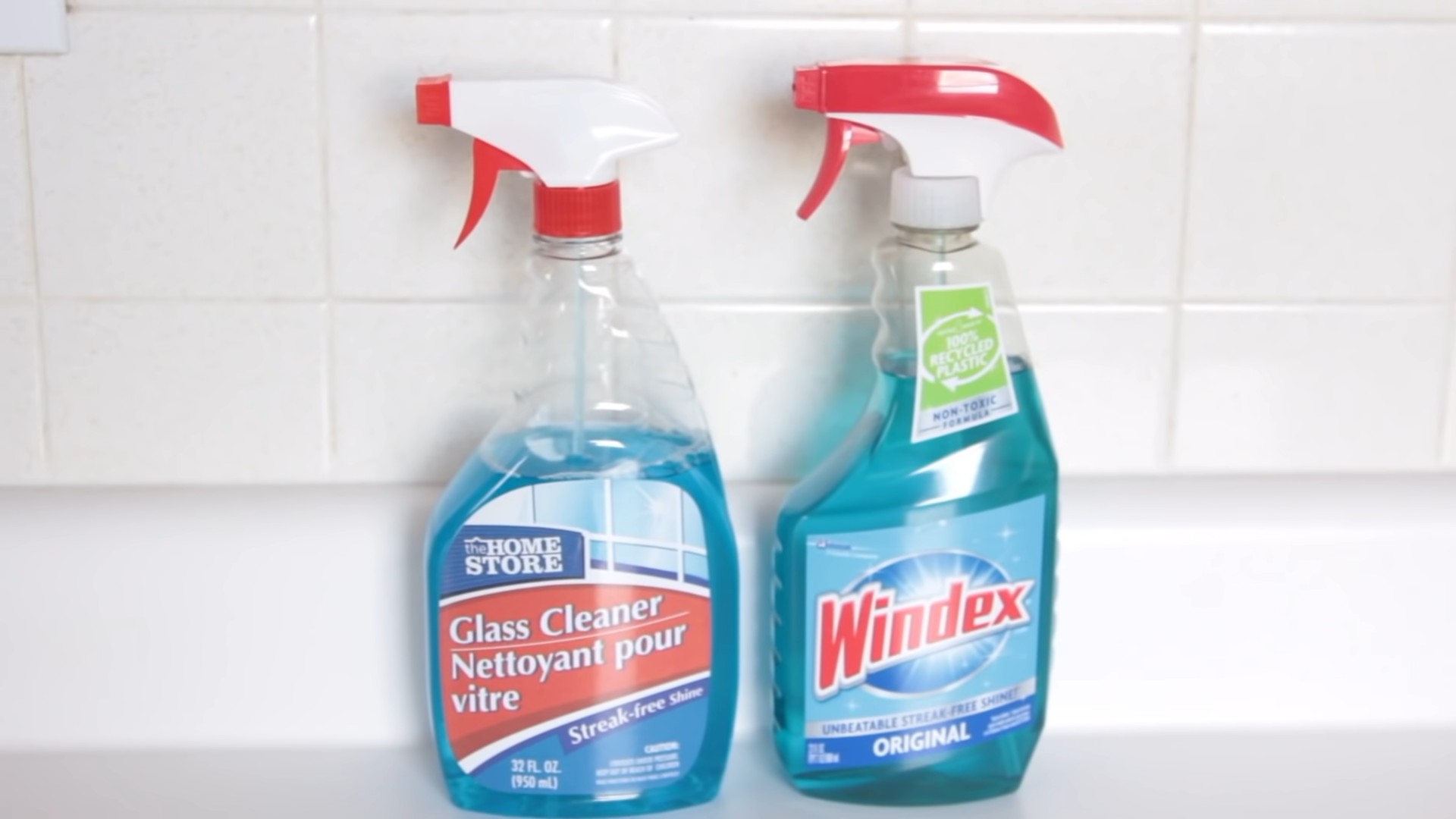
Streak-Free Glass Cleaning: My Secret DIY Weapon!
Okay, let’s be honest, cleaning windows and mirrors can be a real pain. You spend all that time scrubbing, only to be left with annoying streaks that catch the light and make everything look… well, dirty. I’ve been there, trust me! But after years of experimenting, I’ve finally cracked the code to streak-free glass cleaning, and I’m so excited to share my secrets with you. This isn’t just about slapping some cleaner on and hoping for the best; it’s about using the right tools, the right techniques, and a little bit of DIY magic.
Gathering Your Arsenal: The Tools You’ll Need
Before we dive into the cleaning process, let’s make sure you have everything you need. Having the right tools makes a HUGE difference!
* Microfiber Cloths: These are your best friends! Ditch the paper towels, which can leave lint behind. Invest in a few high-quality microfiber cloths specifically designed for glass cleaning. I like to have at least three: one for washing, one for drying, and one for polishing.
* Spray Bottle: You’ll need a clean spray bottle to hold your cleaning solution.
* Squeegee (Optional, but Recommended): A good squeegee can be a game-changer, especially for large windows or shower doors. Look for one with a flexible rubber blade.
* Bucket (Optional): If you’re cleaning a lot of windows, a bucket filled with your cleaning solution can be helpful.
* Distilled Water: Tap water can contain minerals that leave streaks. Distilled water is your secret weapon for a truly streak-free finish.
* White Vinegar: This is my go-to cleaning ingredient! It’s natural, effective, and inexpensive.
* Rubbing Alcohol (Isopropyl Alcohol): This helps to cut through grease and grime.
* Dish Soap (Optional, Use Sparingly): A tiny drop of dish soap can help with stubborn dirt, but too much can leave a residue.
* Old Toothbrush or Small Brush: Perfect for cleaning corners and edges.
* Ladder or Step Stool (If Needed): Safety first! Make sure you can reach all areas comfortably.
Crafting Your Cleaning Concoction: My Favorite DIY Recipes
Now for the fun part: creating your own streak-free cleaning solution! I have a few recipes that I swear by, depending on the level of grime you’re dealing with.
* Recipe 1: The Basic Vinegar Solution
* This is my everyday go-to for light cleaning and maintenance.
* Mix equal parts distilled water and white vinegar in your spray bottle.
* That’s it! Simple, effective, and eco-friendly.
* Recipe 2: The Grease-Busting Powerhouse
* For windows or mirrors with stubborn grease or fingerprints, this recipe is a lifesaver.
* Mix 1 cup distilled water, 1/4 cup white vinegar, and 1/4 cup rubbing alcohol in your spray bottle.
* Recipe 3: The Heavy-Duty Cleaner (Use with Caution!)
* If you’re dealing with really dirty windows (think outdoor windows that haven’t been cleaned in ages), you might need a little extra oomph.
* Mix 2 cups distilled water, 1/4 cup white vinegar, 1 tablespoon rubbing alcohol, and 1 tiny drop of dish soap in your spray bottle. Remember, a little dish soap goes a long way!
The Streak-Free Cleaning Process: Step-by-Step Instructions
Alright, let’s get down to business! Follow these steps carefully, and you’ll be amazed at the results.
1. Prepare the Surface: Before you start spraying, give your windows or mirrors a quick wipe down with a dry microfiber cloth to remove any loose dust or debris. This will prevent you from just smearing the dirt around.
2. Spray the Cleaning Solution: Generously spray your chosen cleaning solution onto the glass surface. Make sure to cover the entire area, but avoid oversaturating it. You want a nice, even coating.
3. Wipe with a Clean Microfiber Cloth: Using a clean, damp microfiber cloth, wipe the entire surface in a circular motion. Apply gentle pressure to loosen any dirt or grime.
4. Squeegee (Optional, but Highly Recommended): If you’re using a squeegee, start at the top corner of the window and overlap each stroke slightly. Wipe the squeegee blade clean with a separate microfiber cloth after each stroke. This prevents you from dragging dirt across the glass.
5. Dry with a Clean, Dry Microfiber Cloth: This is the most important step for achieving a streak-free finish! Use a clean, dry microfiber cloth to buff the glass until it’s completely dry. Pay close attention to the edges and corners.
6. Polish (Optional): For an extra-sparkly finish, you can use a clean, dry microfiber cloth to polish the glass. This will remove any remaining residue and leave your windows looking crystal clear.
7. Tackle the Edges and Corners: Use an old toothbrush or small brush to clean any dirt or grime that may have accumulated in the corners and edges of the window or mirror. Wipe clean with a damp microfiber cloth.
8. Repeat if Necessary: If your windows are particularly dirty, you may need to repeat the cleaning process. Don’t be afraid to give them a second go!
Troubleshooting: Common Problems and Solutions
Even with the best techniques, you might encounter a few challenges along the way. Here are some common problems and how to fix them:
* Streaks: If you’re still seeing streaks, make sure you’re using clean microfiber cloths and distilled water. Also, try using a different cleaning solution or adjusting the amount of cleaner you’re using. Sometimes, less is more!
* Lint: If you’re noticing lint on your windows, it’s probably coming from your cleaning cloths. Switch to high-quality microfiber cloths and avoid using paper towels.
* Smears: Smears can be caused by using too much cleaning solution or not drying the glass thoroughly enough. Use a lighter hand with the spray bottle and make sure to buff the glass until it’s completely dry.
* Hazy Film: A hazy film can be caused by hard water or residue from previous cleaning products. Try using a cleaning solution with more vinegar or rubbing alcohol. You might also need to deep clean your windows to remove any built-up residue.
Extra Tips and Tricks for Sparkling Glass
Here are a few extra tips and tricks that I’ve learned over the years:
* Clean on a Cloudy Day: Avoid cleaning windows in direct sunlight, as the heat can cause the cleaning solution to dry too quickly and leave streaks. A cloudy day is ideal.
* Wash Your Microfiber Cloths Regularly: Dirty microfiber cloths can actually make your windows dirtier! Wash them regularly in hot water with a mild detergent. Avoid using fabric softener, as it can leave a residue on the cloths.
* Don’t Forget the Screens: If you’re cleaning windows, don’t forget to clean the screens as well! You can use a brush or vacuum cleaner to remove dust and debris.
* Clean Your Shower Doors After Each Use: To prevent soap scum buildup, spray your shower doors with a vinegar solution after each use and wipe them down with a squeegee.
* Test in an Inconspicuous Area: Before using any new cleaning solution, test it in an inconspicuous area to make sure it doesn’t damage the surface.
* Be Patient: Achieving streak-free glass takes a little bit of practice and patience. Don’t get discouraged if you don’t get it perfect the first time. Just keep experimenting until you find what works best for you.
I hope these tips and tricks help you achieve sparkling, streak-free glass! Happy cleaning!
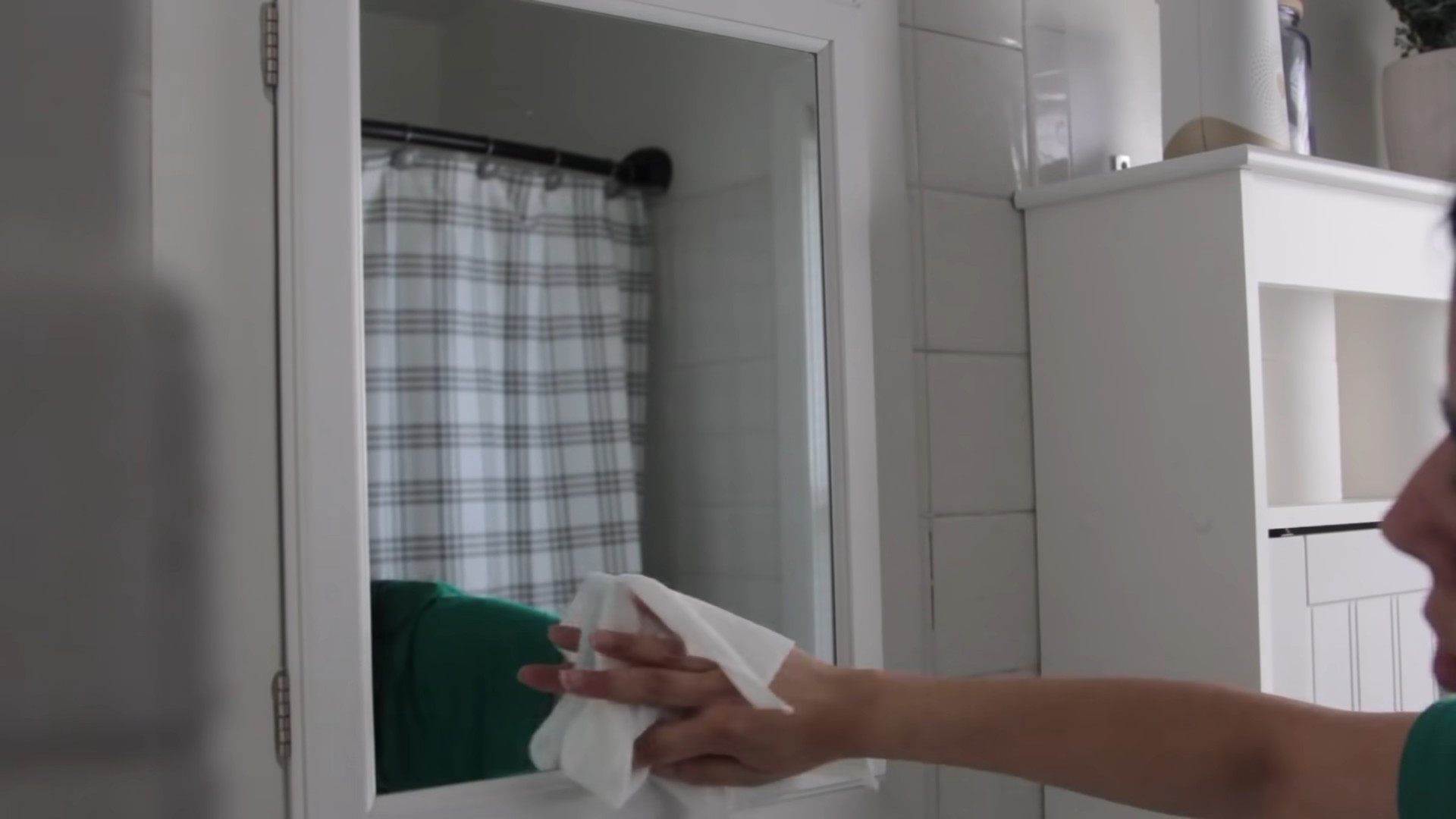
Conclusion
Achieving sparkling, streak-free glass doesn’t require expensive commercial cleaners or endless scrubbing. This DIY glass cleaning hack, utilizing simple ingredients you likely already have in your pantry, is a game-changer for anyone seeking a cost-effective and environmentally friendly solution. We’ve shown you how to banish those frustrating streaks and smudges, leaving your windows, mirrors, and glass surfaces gleaming with a clarity you never thought possible.
The beauty of this method lies not only in its effectiveness but also in its versatility. Feel free to experiment with the ratios of vinegar and water to find the perfect balance for your specific water hardness. For particularly stubborn grime, consider adding a few drops of your favorite essential oil, such as lemon or tea tree, for an extra boost of cleaning power and a refreshing scent. Remember to always test any new cleaning solution on an inconspicuous area first to ensure it doesn’t damage the surface.
Beyond windows and mirrors, this DIY glass cleaner works wonders on shower doors, glass stovetops, and even car windows. Imagine the satisfaction of seeing your world through crystal-clear glass, all thanks to a simple, homemade solution.
We wholeheartedly encourage you to try this streak-free glass cleaning method. It’s easy, affordable, and delivers exceptional results. Ditch the harsh chemicals and embrace a natural approach to cleaning that’s both effective and kind to the environment.
But don’t just take our word for it! We’re eager to hear about your experiences. Share your before-and-after photos, tips, and variations in the comments below. Let’s build a community of sparkling-clean enthusiasts who are passionate about sustainable cleaning practices. Your feedback will not only help others discover the magic of this DIY solution but also inspire us to continue sharing innovative and eco-friendly cleaning hacks. So, grab your spray bottle, gather your ingredients, and prepare to be amazed by the transformative power of this simple yet effective cleaning trick. Let’s make streak-free glass the new normal!
Frequently Asked Questions (FAQ)
Why should I use a DIY glass cleaner instead of a store-bought one?
There are several compelling reasons to opt for a DIY glass cleaner. Firstly, it’s significantly more cost-effective. The ingredients – vinegar and water – are inexpensive and readily available. Secondly, it’s environmentally friendly. Commercial glass cleaners often contain harsh chemicals that can be harmful to your health and the environment. A DIY solution eliminates these concerns, offering a safer and more sustainable cleaning option. Finally, you have complete control over the ingredients, allowing you to customize the solution to your specific needs and preferences. You can adjust the vinegar-to-water ratio based on the severity of the grime or add essential oils for a pleasant scent.
What type of vinegar should I use?
White distilled vinegar is the best choice for cleaning. It’s acidic enough to cut through grease and grime but gentle enough not to damage most surfaces. Avoid using other types of vinegar, such as apple cider vinegar or balsamic vinegar, as they may contain sugars or other compounds that could leave streaks or residue.
What is the ideal ratio of vinegar to water?
A good starting point is a 1:1 ratio of vinegar to water. However, you can adjust this ratio based on your water hardness and the level of grime on your glass surfaces. For hard water, you may need to increase the amount of vinegar. For lightly soiled glass, you can reduce the amount of vinegar. Experiment to find the perfect balance for your specific needs.
Can I use this cleaner on tinted windows?
It’s generally safe to use a vinegar-based cleaner on tinted windows, but it’s always best to test it on an inconspicuous area first. Some window tints are delicate and may be damaged by acidic solutions. If you’re unsure, consult the window manufacturer’s recommendations.
Will the vinegar smell linger?
The vinegar smell will dissipate quickly after cleaning. Opening windows and ventilating the area can help to speed up the process. If you’re particularly sensitive to the smell of vinegar, you can add a few drops of your favorite essential oil to the cleaning solution. Lemon, lavender, and tea tree oil are all excellent choices.
What type of cloth should I use to wipe the glass?
Microfiber cloths are the best choice for cleaning glass. They’re highly absorbent and won’t leave lint or streaks behind. Avoid using paper towels, as they can often leave streaks and residue. You can also use a squeegee for larger surfaces like windows and shower doors.
How often should I clean my windows and mirrors?
The frequency of cleaning depends on several factors, including the location of your windows and mirrors, the amount of dust and dirt in your environment, and your personal preferences. As a general guideline, cleaning windows every few months and mirrors every few weeks is a good starting point.
Can I use this cleaner on my car windows?
Yes, this DIY glass cleaner is safe to use on car windows. However, avoid getting the solution on the car’s paint, as vinegar can potentially damage the finish over time. Rinse the windows thoroughly with water after cleaning to remove any residue.
What if I still see streaks after cleaning?
If you’re still seeing streaks after cleaning, there are a few things you can try. First, make sure you’re using a clean microfiber cloth. Second, try adjusting the vinegar-to-water ratio. You may need to increase the amount of vinegar if you have hard water. Third, make sure you’re not using too much cleaning solution. A light mist is all you need. Finally, try buffing the glass with a dry microfiber cloth after cleaning to remove any remaining streaks.
Can I add anything else to the cleaning solution?
While vinegar and water are the primary ingredients, you can add a few other things to enhance the cleaning power or scent. A few drops of dish soap can help to cut through grease and grime. Essential oils can add a pleasant scent and have antibacterial properties. However, avoid adding too many ingredients, as this can leave streaks or residue. Always test any new cleaning solution on an inconspicuous area first.
How do I store the DIY glass cleaner?
Store the DIY glass cleaner in a spray bottle in a cool, dark place. Be sure to label the bottle clearly to avoid confusion. The solution should last for several months. If you notice any discoloration or separation, discard the solution and make a fresh batch.


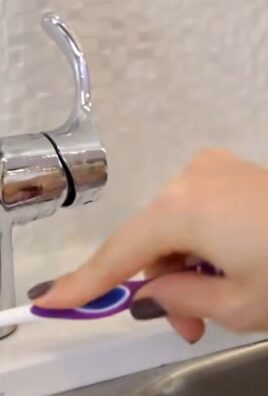
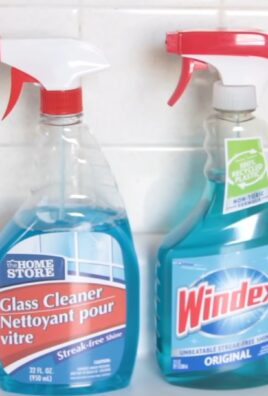
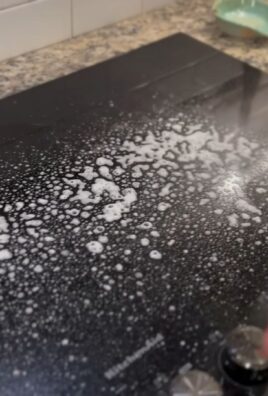
Leave a Comment